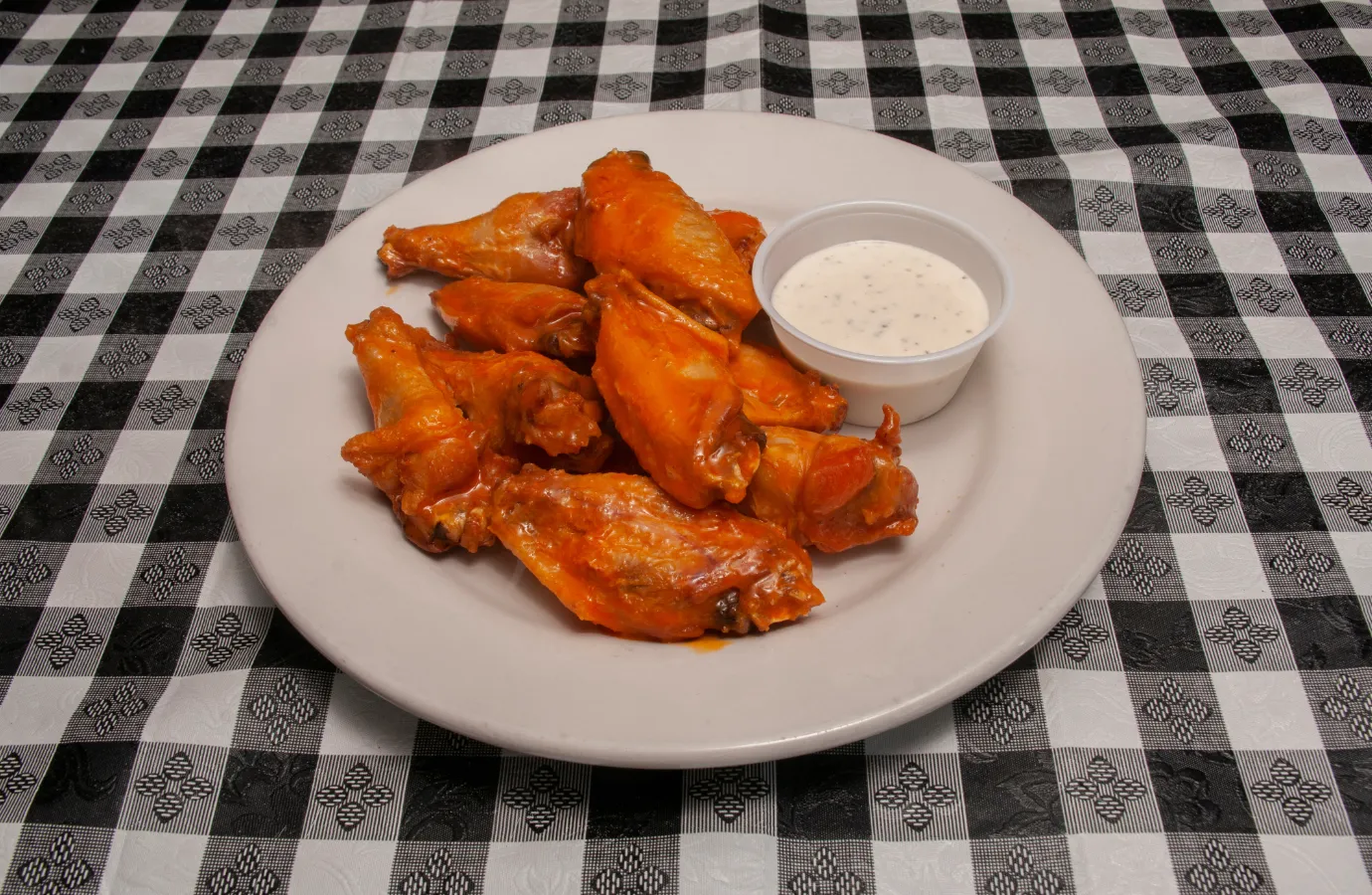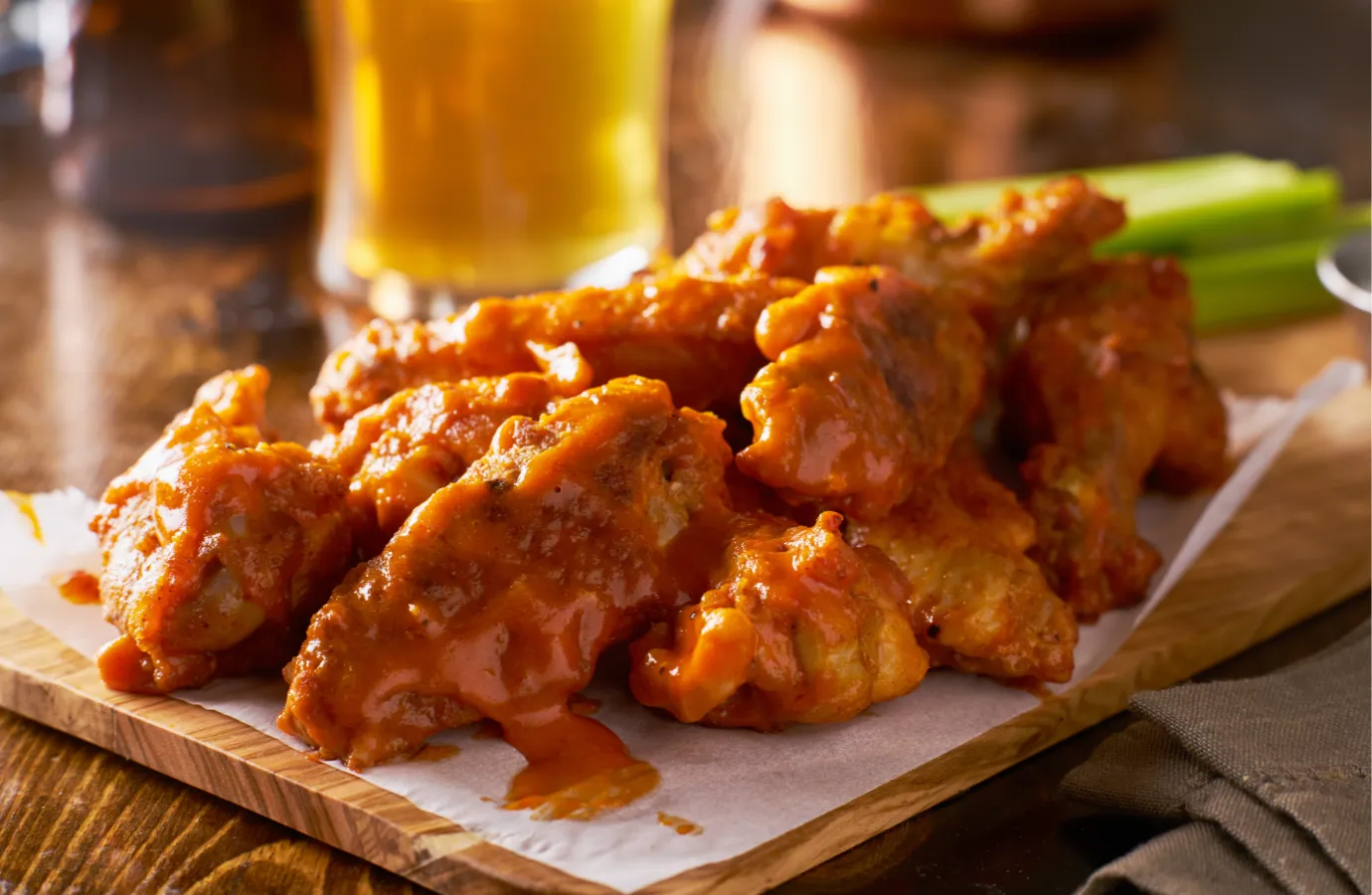Nutritional Profile of Buffalo Chicken Tenders
Understanding the nutritional aspects of buffalo chicken tenders is key for anyone looking to maintain a balanced diet while indulging in this fiery delight. Let’s break down the calorie content and nutritional components, ensuring you have all the information at your fingertips.
Calories in Buffalo Chicken Tenders
When we talk about buffalo chicken tenders, one question often pops up: “How many calories are we talking about?” The answer isn’t as straightforward as you might think. A single buffalo chicken tender can vary significantly in calorie count, primarily due to its size, the breading, and the amount of sauce used. On average, you can expect a buffalo chicken tender to contain about 100 to 150 calories. Remember, the key lies in moderation and understanding the impact of these delicious tenders on your daily caloric intake.
Factors Affecting Caloric Content
Several factors can swing the calorie count of your beloved tenders. First, the cooking method plays a crucial role. Fried tenders soak up more oil, pushing the calorie count higher than their baked counterparts. Secondly, the batter or breading, often a mix of flour and spices, adds more than just crunch. It significantly increases the calories. Lastly, the buffalo sauce—while irresistibly tangy and spicy—contributes its share of calories, especially when you drench your tenders in it.
Macro and Micronutrients
Beyond calories, it’s crucial to peek into what else these tenders bring to the table, nutritionally speaking.
- Proteins, Fats, Carbohydrates: Buffalo chicken tenders are a protein-rich snack, offering a good amount of this essential macronutrient. However, they also bring fats and carbohydrates to the party, primarily from the breading and the cooking process. While protein supports muscle repair and growth, keep an eye on the fats and carbs to balance your diet.
- Vitamins and Minerals: Though not a powerhouse of vitamins and minerals, buffalo chicken tenders do provide some nutritional benefits. Depending on the preparation, they can offer iron, which is crucial for blood health, and calcium, important for bone strength. The nutritional yeast or spices in the breading might also add a dash of B vitamins.
Understanding the nutritional profile of buffalo chicken tenders allows you to make informed choices. Bnsidy coering the calories, cooking methods, and nutritional content, you can enjoy these spicy treats without derailing your dietary goals. Stay tuned as we continue to explore the comparison with other chicken preparations, ensuring you’re armed with all the knowledge to enjoy your food to the fullest.
Comparison with Other Chicken Preparations

Diving into the world of chicken dishes, buffalo chicken tenders stand out for their irresistible combination of spice and crunch. Yet, it’s intriguing to see how they stack up against other chicken favorites in terms of nutrition and caloric content. This comparison sheds light on making healthier choices without sacrificing flavor.
Buffalo Wings vs. Buffalo Tenders
When comparing buffalo wings to buffalo tenders, the most noticeable difference lies in their parts of the chicken. Wings come from the smaller, wing portion, often containing more skin, which contributes to a higher fat content. On the flip side, tenders are leaner cuts from the breast, offering more protein per bite. Consequently, when it comes to calories in buffalo chicken tenders, they often come in slightly lower than their winged counterparts, provided the cooking methods and serving sizes are similar. This makes tenders a slightly leaner option for calorie-conscious diners.
Grilled vs. Fried Buffalo Chicken Tenders
The cooking method significantly impacts the nutritional profile of chicken dishes. Grilled buffalo chicken tenders, for instance, typically contain fewer calories and less fat than fried ones. Grilling allows the fat to drip away and doesn’t require additional oil, reducing overall calorie intake. For those closely watching their caloric consumption, opting for grilled over fried can make a considerable difference in maintaining a balanced diet without missing out on the spicy flavors of buffalo sauce.
Nutritional Comparison with Other Popular Chicken Dishes
Comparing buffalo chicken tenders to other popular chicken dishes like chicken breast, thighs, or drumsticks, offers a broader perspective on dietary choices. Skinless chicken breasts remain the gold standard for low-calorie, high-protein options. However, tenders, especially when grilled and not overly drenched in sauce, can serve as a flavorful alternative with a reasonable calorie count. It’s all about balance and preparation. Choosing leaner cuts and mindful cooking methods allows you to enjoy the spicy kick of buffalo tenders without overindulging in calories.
The Role of Buffalo Chicken Tenders in a Balanced Diet
Buffalo chicken tenders, a crowd-pleaser with their tangy, spicy flavor, often prompt questions about their fit in a healthy, balanced diet. Let’s explore how to enjoy these delicious treats without compromising nutritional goals, focusing on moderation, portion control, and suitable side dishes.
Incorporating Buffalo Chicken Tenders into Your Diet
In the quest for balance, the key to including buffalo chicken tenders in your diet revolves around how you serve them. Opting for grilled tenders instead of fried can significantly reduce the calorie load, making them a healthier choice for those who can’t resist the buffalo temptation. Moreover, being mindful of portion sizes plays a crucial role. Instead of making buffalo tenders the centerpiece, consider them a protein addition to a larger, vegetable-rich meal.
Pairing tenders with nutritious sides such as leafy green salads, roasted vegetables, or whole grains can balance out the meal, adding fiber, vitamins, and minerals. This approach not only satisfies your craving for that buffalo kick but also ensures you’re feeding your body with a variety of nutrients needed for optimal health.
Health Considerations
While enjoying buffalo chicken tenders, it’s important to consider their place within your overall dietary intake. Due to their calorie content and the potential for high sodium levels from the buffalo sauce, individuals with specific health concerns, such as hypertension or those monitoring their calorie intake for weight management, should consume these tenders in moderation.
Moreover, opting for homemade buffalo sauce can give you control over the ingredients, allowing for adjustments in salt and butter for a healthier version. Awareness and adjustments in how buffalo chicken tenders are prepared and served can make them a more healthful option that fits within a diverse and balanced diet.
In conclusion, buffalo chicken tenders can indeed have a place in a balanced diet with thoughtful consideration to their preparation and serving. Moderation, alongside a focus on accompanying them with nutrient-rich sides, ensures that you can enjoy this spicy delight without derailing your health goals. As we continue to navigate through dietary choices, understanding the impact of our favorite foods like buffalo chicken tenders on our overall nutrition is vital. Stay tuned for more insights in the following sections, as we delve deeper into FAQs, providing answers to common queries about buffalo chicken tenders.
Frequently Asked Questions
Navigating through the spicy world of buffalo chicken tenders, numerous questions bubble up, especially concerning their nutritional aspects and how they fit into our diets. Here, we tackle some of the most common queries to shed light on this beloved dish.
How Many Calories Are in a Serving of Buffalo Chicken Tenders?
One of the most pressing questions is about the calories in buffalo chicken tenders. The calorie count can vary, mainly depending on the cooking method and the size of the tenders. On average, a single buffalo chicken tender can range from 100 to 150 calories. Remember, this number can climb higher depending on how they’re prepared and served, especially if they’re fried and drenched in sauce. Opting for grilled tenders and controlling the amount of sauce can help manage calorie intake.
Can Buffalo Chicken Tenders Be Part of a Healthy Diet?
Absolutely! Buffalo chicken tenders can find their place in a balanced diet with mindful consideration. The trick lies in how they’re prepared and what they’re paired with. Grilled tenders, for example, are a lower-calorie option compared to their fried counterparts. Serving them alongside a heap of vegetables or a fresh salad can balance out the meal, ensuring you’re getting a good mix of protein, vitamins, and minerals without going overboard on calories.
How Does Cooking Method Affect the Caloric Content of Buffalo Chicken Tenders?
The cooking method significantly impacts the caloric content of buffalo chicken tenders. Grilling or baking tenders instead of frying them can dramatically reduce the amount of fat and calories. Fried tenders absorb oil, increasing their calorie count. By choosing healthier cooking methods and being mindful of the amount of sauce used, you can enjoy buffalo chicken tenders more frequently within a health-conscious diet.
Conclusion and Final Thoughts
As we wrap up our flavorful journey through the world of buffalo chicken tenders, it’s clear that this beloved dish can be both a treat to the taste buds and a part of a balanced diet. While the calories in buffalo chicken tenders may vary, understanding the impact of cooking methods, portion sizes, and accompaniments enables us to enjoy these tenders without guilt. By opting for grilled over fried, controlling the sauce, and pairing with nutritious sides, we can savor the spicy goodness in moderation.
The versatility and popularity of buffalo chicken tenders make them a staple in many diets. However, mindful consumption is key to integrating them healthily into our meals. Remember, food is not just about nutrition; it’s also about pleasure, culture, and the joy of eating. Buffalo chicken tenders, with their rich flavor and satisfying texture, embody this balance when enjoyed thoughtfully.
In conclusion, let the tangy and spicy delight of buffalo chicken tenders continue to grace our tables, but let’s also be aware of their nutritional content and make informed choices. Here’s to enjoying every bite of our favorite dishes while maintaining a happy, healthy relationship with food. Cheers to mindful indulgence and the endless quest for culinary balance!



4 thoughts on “Calories in Buffalo Chicken Tenders: Nutritional Facts and Diet Tips”